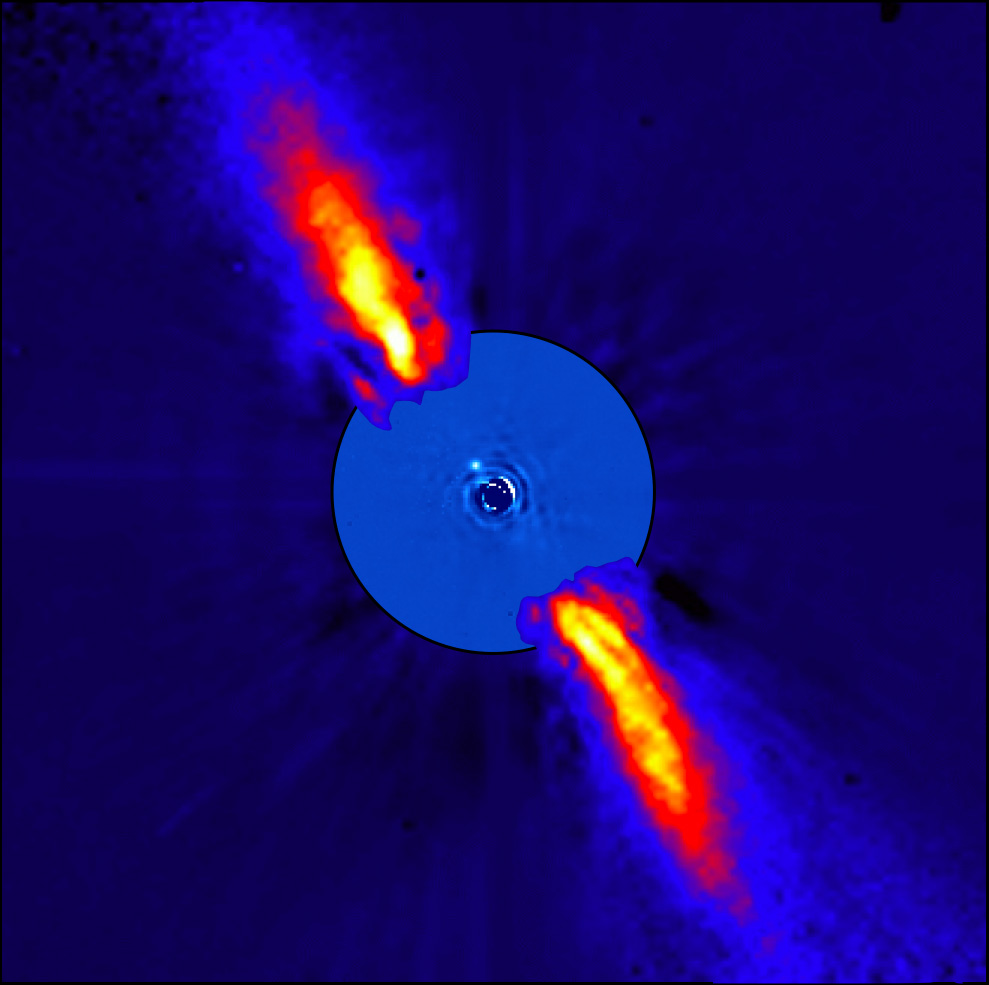
Thematic research : EXOPLANETE
Direct imaging and characterization of exoplanets
Overview
The direct detection of exoplanets is necessary to determine their characteristics, such as their atmospheric constitution, and to understand their formation mechanism.
The scientific framework
The more than 5,000 known exoplanets present a great diversity of physical characteristics, which has its origins in the history of their formation and evolution. Understanding these planetary systems as a whole requires the study of all these types of planets. In the ultimate quest for the habitability of planets other than Earth, analysis of their atmosphere is fundamental to probing their composition. From this point of view, knowledge of giant planets from their earliest stages of formation is an important step, as they have a major impact on the evolution of smaller planets that are conducive to the appearance of life. The smaller and more advanced the planets, the less luminous they are. To reach these ambitious goals, which require contrasts ranging from a few million for young giant planets to a few billion for mature telluric planets, we need to develop astronomical instrumentation that breaks with existing instruments.
Future instruments
The project involves developing technological building blocks for ground-based observatories: for the Very Large Telescope (VLT, 4 telescopes 8 meters in diameter), the VLTI (interferometric recombination of these 4 telescopes) and the Extremely Large Telescope (ELT, telescope 39 meters in diameter planned for 2030), all based in Chile, and under the responsibility of the European Southern Observatory (ESO). These building blocks concern the fields of adaptive optics, interferometry and spectroscopy. Although the long-term objective is to equip the ELT with an instrument capable of observing telluric exoplanets and probing their atmospheres, the first phase will enable the preparation of basic techniques on existing telescopes (VLT and VLTI). A number of spin-offs are expected in fields outside astrophysics, such as metrology, optical communications, biomedical imaging, real-time control of on-board systems and greenhouse gas monitoring.
The concepts studied
The “Origins” project proposes to study five techniques needed to observe and study exoplanets by 2030 :
- Wave surface analysis for precise measurement of aberrations, some of which are evolving very rapidly ;
- The manufacture of new types of lightweight, hybrid, high-speed deformable mirrors based on self-supporting silicon membranes and 3D-printed electroactive polymer (EAP) actuators ;
- The design of GPU-based real-time computers to apply corrections to deformable mirrors ;
- The comparison of several types of compact imaging spectrographs with single-mode fibers and high spectral resolution ;
- The development of photonic components to significantly improve VLTI interferometric recombination.
Axis managers :
Anthony Boccaletti anthony.boccaletti@obspm.fr
Mamadou N’Diaye mamadou.ndiaye@oca.eu




